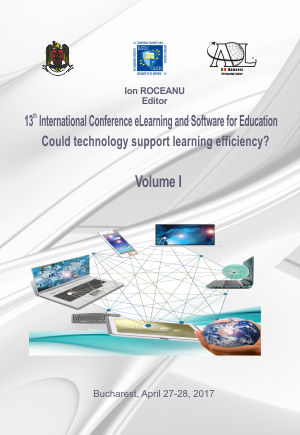STUDENT MODELLING IN A WEB-BASED PLATFORM FOR LEARNING GAMES COMPOSING
STUDENT MODELLING IN A WEB-BASED PLATFORM FOR LEARNING GAMES COMPOSING
Author(s): Valentin Atanasov, Aneliya IvanovaSubject(s): Social Sciences, Education, Higher Education , Educational Psychology
Published by: Carol I National Defence University Publishing House
Keywords: Game Based Learning; Computer Learning Game; Student Model; Education; Platform for Learning Games Composing.
Summary/Abstract: The aim of this work is to outline the necessity for designing a new type of student model intended to serve a WEB based platform for interdisciplinary learning games composing as well as to introduce the process of synthesis of the model. Using the benefits of the computer game in the classroom without conforming the didactical aspects, could produce results slightly different from the main pedagogical objectives. Because of the specific nature of the game and playing there are not established yet standards supporting the learning process based on computer games. This circumstance determines the complexity of the synthesis of a student model that is to be built in a learning game. This paper discusses the idea about a WEB based platform for learning game composing which follows a new model of the student in a learning game, based on a certain didactical model. Methods: The model is synthesized on the base of a preliminarily defined didactical model and outlines the basic fields, corresponding to the process of acquiring knowledge using a learning game. A substantial differences between traditional e-Learning and game based learning approaches are examined. Results: The basic concept and notation of the proposed student model is presented and further the model is described in details. The model is organized in three areas, reflecting activities, individualities and knowledge of the students: Interaction area, Archetype area and Competence area. The model areas are embraced by a Stimulus environment giving the context of the model, namely that the model represents a student who learns while playing a learning game. The main advantage of the model is the convergence of the computer game and the didactical approach in a stimulus environment for learning. The proposed model could be used not only for a learning game referred to a specific subject domain, but also for a WEB-based platform for interdisciplinary learning games composing.
Journal: Conference proceedings of »eLearning and Software for Education« (eLSE)
- Issue Year: 13/2017
- Issue No: 01
- Page Range: 272-279
- Page Count: 8
- Language: English

